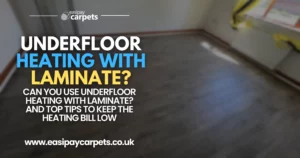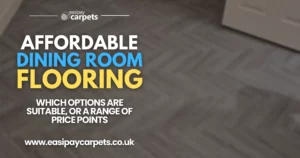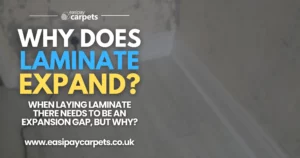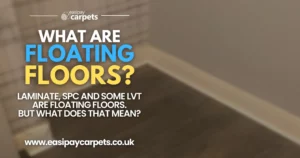
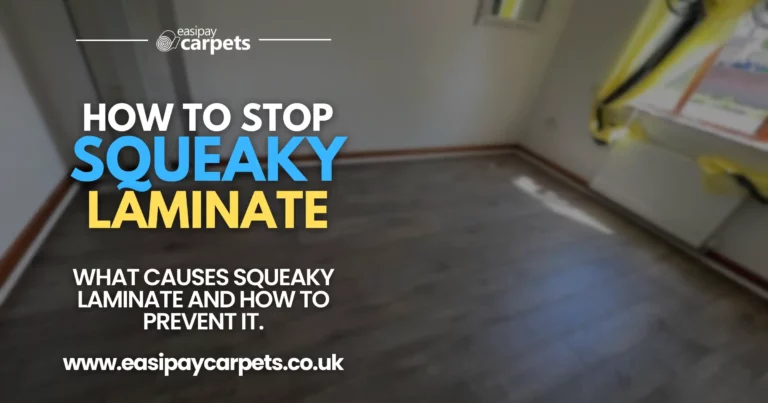
Why Your Laminate Flooring Squeaks And How To Stop It.
Laminate flooring is a popular choice due to its durability, affordability, and easy installation. However, over time, some homeowners may notice an annoying squeak when walking across their laminate floors. Squeaky laminate flooring is not just a minor irritation; it can also indicate underlying issues that need to be addressed. This guide will help you understand how to stop laminate flooring from squeaking, the common causes of this problem, and practical DIY solutions to fix it.
Causes of Squeaky Laminate Floors
Before diving into the solutions, it’s essential to understand the root causes of squeaky laminate floors. Here are the most common reasons:
Uneven Subfloor:
- Description: An uneven subfloor creates gaps or high points that cause the laminate planks to move and rub against each other or the subfloor when walked on.
- Impact: This friction results in squeaking sounds as the planks shift.
Improper Installation:
- Description: If laminate flooring is not installed correctly, such as not leaving adequate expansion gaps or failing to secure the planks properly, it can lead to squeaking.
- Impact: Without room to expand or proper locking, planks can move and create noise.
Moisture Issues:
- Description: Changes in humidity and moisture levels can cause the laminate to expand or contract, leading to gaps and movement that result in squeaks.
- Impact: This is particularly common in areas like kitchens, bathrooms, or basements.
Floating Floor Movement:
- Description: Laminate floors are often installed as a “floating floor,” meaning they are not glued or nailed down. This can cause movement over time, especially in high-traffic areas.
- Impact: The movement can cause friction between the planks or between the flooring and the underlayment, leading to squeaks.
Subfloor Fasteners:
- Description: Loose or protruding nails or screws in the subfloor can rub against the laminate flooring, causing squeaks when weight is applied.
- Impact: This issue is common when the subfloor isn’t properly secured or has aged over time.
How to Stop Laminate Flooring from Squeaking
Once you’ve identified the possible cause of the squeaking, you can use one or more of these effective solutions to fix the problem:
1. Level the Subfloor
- Solution: If the subfloor is uneven, the best solution is to level it before reinstalling the laminate flooring.
- Steps:
- Remove the laminate planks in the affected area and inspect the subfloor.
- Use a self-levelling compound to fill low spots or sand down high spots on the subfloor to create a smooth, level surface.
- Reinstall the laminate flooring, ensuring the planks are securely locked in place.
- Why It Works: A level subfloor eliminates gaps and friction points that cause squeaks, providing a stable base for the flooring.
2. Use Shims to Stop Movement
- Solution: Insert small shims between the subfloor and the laminate planks to prevent movement that causes squeaking.
- Steps:
- Identify the squeaky areas by walking on the floor and noting where the noise occurs.
- Carefully lift the laminate planks near the squeak and insert thin wood or plastic shims between the subfloor and planks.
- Adjust the shims as needed until the squeak stops and trim any excess shim material.
- Why It Works: Shims fill gaps and stabilize the flooring, preventing the movement that leads to squeaks.
3. Tighten Loose Subfloor Fasteners
- Solution: Secure loose nails or screws in the subfloor that may be causing the laminate to squeak.
- Steps:
- Lift the laminate planks around the squeaky area and inspect the subfloor for loose or protruding fasteners.
- Replace loose nails with screws or tighten existing screws to secure the subfloor.
- Reinstall the laminate planks and check for squeaks.
- Why It Works: Properly secured subfloor fasteners prevent movement and reduce friction that can cause squeaking.
4. Apply Dry Lubricant to the Joints
- Solution: Apply a dry lubricant, such as powdered graphite or talcum powder, to the joints between the laminate planks to reduce friction.
- Steps:
- Sprinkle a small amount of dry lubricant along the seams of the squeaky planks.
- Gently tap the planks with a rubber mallet to work the lubricant into the joints.
- Wipe away any excess powder with a soft cloth.
- Why It Works: Dry lubricant reduces friction between the planks, minimizing squeaks without damaging the laminate.
5. Reinstall Expansion Gaps
- Solution: Ensure that proper expansion gaps are maintained around the perimeter of the room to prevent laminate planks from rubbing against walls or other fixed objects.
- Steps:
- Remove baseboards or trim around the room’s edges and check for adequate expansion gaps (usually 1/4 to 1/2 inch).
- If gaps are too small or non-existent, trim the laminate edges to create the necessary space.
- Reinstall baseboards or trim to cover the gaps.
- Why It Works: Proper expansion gaps allow laminate floors to expand and contract naturally, preventing movement that causes squeaks.
6. Use Foam Padding or Felt Pads
- Solution: Add foam padding or felt pads under furniture legs and heavy objects to reduce pressure points on the laminate flooring.
- Steps:
- Attach felt pads or foam padding to the bottom of all furniture legs and heavy objects that rest on the laminate floor.
- Regularly check and replace pads as needed to maintain effectiveness.
- Why It Works: Distributing weight more evenly across the floor reduces the likelihood of squeaks caused by concentrated pressure.
7. Consider Installing a New Underlayment
- Solution: Replace the existing underlayment with a high-quality, noise-reducing underlayment designed specifically for laminate flooring.
- Steps:
- Remove the laminate planks and existing underlayment.
- Install a new underlayment that provides cushioning and soundproofing properties, such as cork or foam.
- Reinstall the laminate flooring over the new underlayment.
- Why It Works: A better underlayment reduces noise transmission and provides a more stable base for the laminate, minimizing squeaks.
DIY Tools for Repairing Squeaky Laminate Floors
Here are some essential tools you may need for fixing squeaky laminate floors:
- Rubber Mallet: For gently tapping planks back into place without damaging them.
- Shims: To fill gaps and stabilize the flooring.
- Utility Knife: For trimming planks or creating expansion gaps.
- Screwdriver or Drill: To tighten or replace loose subfloor fasteners.
- Self-Levelling Compound: For levelling uneven subfloors.
- Dry Lubricant (Graphite or Talcum Powder): For reducing friction between planks.
- Felt Pads or Foam Padding: To place under furniture legs and heavy objects.
Conclusion
Squeaky laminate flooring can be a nuisance, but it doesn’t have to be a permanent problem. By understanding the underlying causes and using the right tools and techniques, you can effectively stop laminate flooring from squeaking and restore peace and quiet to your home. Whether it’s levelling the subfloor, tightening fasteners, adding shims, or using a high-quality underlayment, these solutions offer a practical and effective way to fix squeaky floors and prevent future noise issues.
Easipay Carpets can help you get brand new flooring without the high up-front cost – by simply letting you spread the cost of the flooring over time instead. There’s no interest on our plans so you aren’t spending a penny more than you would buying it outright and we include underlay, door trims, carpet grippers and laminate beading for free. Prices start from just £10 per week!
It starts with a free home appointment and quote, to get booked in at a time that suits you, tap the “Get Started” button below and fill out the contact form!
Still Got Questions? Here's 10 FAQs!
You can stop laminate flooring from squeaking by levelling the subfloor, using shims, tightening loose fasteners, applying dry lubricant, and ensuring proper expansion gaps.
Common causes of squeaky laminate floors include uneven subfloors, improper installation, moisture issues, floating floor movement, and loose subfloor fasteners.
Yes, in some cases, applying dry lubricant to the joints or using felt pads under furniture can reduce squeaks without removing the flooring.
To level an uneven subfloor, remove the laminate planks, apply a self-levelling compound to low areas or sand down high spots, and then reinstall the flooring.
Basic tools like a rubber mallet, shims, utility knife, screwdriver, dry lubricant, and felt pads are typically all you need to fix squeaky laminate floors.
Yes, changes in humidity and moisture levels can cause laminate to expand or contract, leading to gaps and movement that cause squeaks.
If the existing underlayment is poor quality or damaged, replacing it with a noise-reducing underlayment can help stop squeaking.
Remove baseboards, trim the laminate edges to create a 1/4 to 1/2 inch gap around the room’s perimeter, and reinstall baseboards.
Yes, felt pads placed under furniture legs help distribute weight more evenly and reduce pressure points that can cause squeaks.
No, it’s better to use a dry lubricant like graphite or talcum powder, as silicone sprays can leave a slippery residue that may damage the laminate surface.

